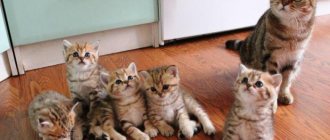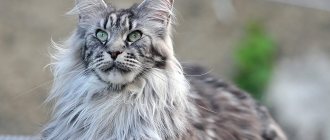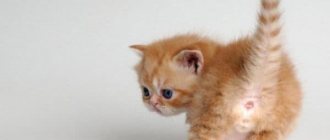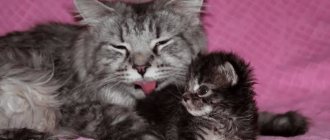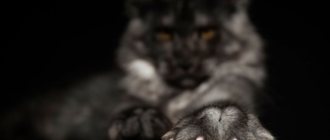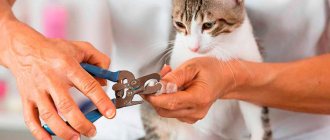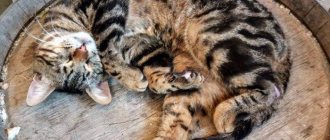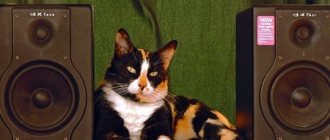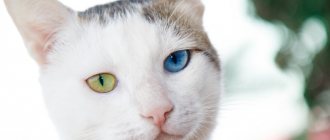Why do they issue documents for animals?
Having documents for a cat is a prerequisite for participation in exhibition events. If a pet is bought for the soul and does not plan to receive honorary titles, then this is not a reason to refuse official registration. A basic set of documentation is necessary not only for exhibitions, but also for:
- Border crossing
. Moving to another country or another city within the country will be impossible without providing the required papers for a pet.
- Solutions to controversial issues
that arise when a pet is kidnapped or lost. Trying to prove ownership in court with words alone is a lost cause.
- Proof of breeding value
. The desire to breed a breed can come spontaneously. If everything is prepared in advance, you won’t have to look for where to buy documents for a cat. You will also have to deal with mandatory paperwork after the birth of kittens.
Before purchasing, familiarize yourself with what all the necessary papers look like. This will eliminate the subsequent search for information on how to prepare documents for a kitten yourself.
ATTENTION! False metrics. — Forum about cats for cat lovers and felinologists
The article provides examples of a dangerous conflict in felinology, which is incited by a provocateur from Estonia, guided by personal hostility and slander, pitting the interests of citizens and organizations in Russia against each other.
As long as such false metrics are in circulation in our pet markets, no one will save buyers from disappointment from the activities of clubs. Moreover, the buyer does not differentiate between clubs, so we must fight to eradicate such absurdities. If the manager is completely illiterate in the field of felinology, then he does not register the names of kittens and nurseries, does not correctly determine the breed, does not indicate the month of birth, and does not correctly index the sex of the animal. By the way, the color of the chinchilla and silver marble can be silver, chinchilla and golden variations. Where did black marble come from? So, only gold can be reborn immediately into the initial phase, and then only with certain inbred connections.
In a word, GUARD. Please help me find the leaders of this organization. I know that Natalia Viktorovna is on the phone. 353-. completely elusive (however, given the prevalence of such metrics in Moscow, this is not surprising). Perhaps someone, somewhere, once already met them. How can you clarify their status: are they on their own or are they listed with someone? HELP ME PLEASE!
Added
(2006-03-27, 11:23 Am) ——————————————— Here’s what else is written in the metrics: “The club is responsible for paperwork, provides you with information about the main lines of the breeding breeding, organizes exhibitions, including INTERNATIONAL ones.”
No more, no less! I would also like to know the name of this club (and not the nursery), where and when are the INTERNATIONAL exhibitions of this organization held and what guides felinologists when preparing metrics? The Temple Cat Is Not Afraid of the Gods
Source
What set of documents does the breeder issue?
Documents for a cat are divided into 2 groups: mandatory and secondary. Mandatory ones include:
- veterinary, recording the number of vaccinations and other medical procedures performed;
- tribal, confirming belonging to a certain breed;
- a purchase and sale agreement necessary to transfer ownership.
The secondary or additional group includes certificates, diplomas and certificates. Their receipt is not mandatory and is issued at the request of the future owner.
Veterinary passport
Selling an animal without a veterinary passport is a reason for serious consideration. The only legitimate explanation for this situation is the small age of the animal, less than 3 months. In this case, you don’t have to issue a veterinary passport, but then the question arises about the health of the future pet. Such an early separation from the mother is fraught with increased vulnerability to infections.
No later than 3 months, the kitten receives its first vaccination. All information about the vaccine and the doctor who administered the injection is recorded in the veterinary passport. In its content, it resembles a human medical record. It contains information about:
- chipping;
- antiparasitic treatment;
- administered vaccines;
- surgical interventions and studies performed to make a diagnosis.
The personal data of the pet (date of birth, gender, nickname), including information about reproductive function, and the owner (full name, residential address) are taken into account separately. All records are secured with the personal seal of the veterinarian and the veterinary clinic. If there are no stamps, the passport is considered invalid.
When visiting other countries, it is recommended to obtain an international veterinary license. document. All data in it is duplicated in two languages: English or German. With such a passport you can travel not only within the country, but also abroad. If you arrange it in advance, you will not have to pay twice.
Before traveling abroad, contact your state animal disease control agency to understand how to obtain paperwork for your cat. In addition to the passport, you will have to issue a special certificate in the form, valid for 5 days after its receipt.
Please note that the rules for transporting animals are constantly changing within the country, and can also vary greatly in different countries. You can find out more information about necessary vaccinations, examinations and certificates by calling the Federal Veterinary Control Service.
Pedigree, aka metric
The first official document confirming the kitten’s identity is a metric. It contains the animal's date of birth, brief information about the breed and parents. Responsibility for registration of the metric lies with the club where the kitten’s mother is registered. Data collection is carried out 1.5 months after the birth of the baby. Based on the metric, a pedigree is obtained, so these papers are compared with a birth certificate and passport.
Pedigree documents issued for a Scottish cat will confirm its real belonging to the breed. This will eliminate deception with the British Fold, because such a breed does not exist in nature. And this is the most striking example among many similar ones.
Sample of a cat certificate, its type depends on the issuing organization and region of residence
Another important point is the ability to participate in any exhibitions, including international ones. Over time, many owners can change their spontaneous decision to abandon their show career. If the pedigree is drawn up as a backup option in advance, then problems with its registration at too late an age will not arise.
Contract of sale
The purchase and sale agreement specifies the breed, color, age and cost of the future pet. After receiving it, ownership of the kitten is transferred to the new owner. Assigning a future pet to your name is a reliable argument when resolving controversial situations in court (theft, division of property during divorce).
In addition to the basic data, it is permissible to enter additional information: the timing of sterilization, restrictions on the selection of partners for mating. The seller has the right to prescribe conditions for a potential litter. Basic information about the seller, buyer and the club where the kitten’s mother is registered is also indicated.
Additional papers
Additional documentation includes certificates, diplomas and a certificate from a veterinarian. They are issued on the basis of mandatory cat papers.
Registration certificate
is drawn up on the basis of metrics. It contains the registration number of the pet and indicates ownership. The certificate makes it possible to register litters, obtain pedigrees and titles. If its registration occurred before the sale of the animal, the seller is obliged to make a transfer. In this case, ownership will pass to the new owner.
In the diploma
assign the final grade to the furry contestants who performed at the exhibition. It specifies the expert assessment, title, nomination and awarded place.
Veterinary certificate
necessary for participation in exhibitions and trips abroad. It is issued after confirmation:
- pet health;
- undergoing mandatory vaccinations and veterinary and sanitary treatments;
- carrying out the necessary laboratory diagnostic studies.
An animal older than 3 months must be vaccinated against rabies and examined for parasites and ringworm. All vaccinations are done no later than a month before the certificate is issued. They check for parasites no later than 2 months in advance, and for lichen – immediately before registration.
Activation procedure
- The club can activate litters only in the city of presence.
- You need to come with the kittens to the club’s reception day or invite a club specialist to your home. The entire litter is activated before the kittens are sold at 45-50 days after birth.
- The club specialist examines and writes out a metric for each kitten, which records: the breed, color, gender of the kitten (which is determined by external data and the pedigree of the parents),
- kitten's date of birth,
- parents' nicknames and their titles,
- kitten's name or initial letter from the stud book, cattery prefix (if available)
- Full name of the breeder, his contact details,
- metric number and date of issue,
- club contacts, seal, signature.
Before reaching one year of age, the metric must be replaced with a pedigree.
Self-activation
The breeder has the right to independently activate litters after training:
- Training in licensed MFA courses (full-time or part-time) is required.
- Pass a face-to-face exam at seminars or courses conducted by the club (examination of a cat, determination of color, determination of bone defects, description and comparison of animals of different types and colors, practical questions on exhibition rules).
- Pass an exam at an exhibition (practice describing your breed).
- You can learn without breeding experience.
After passing the exams, a certificate is issued on the MFA form with the right to certify litters born in the nursery.
Source
Cats from the nursery - veterinary passport and pedigree
In order for a cat to participate in exhibitions, owners must provide:
- veterinary passport;
- pedigree of the cat (if the animal is purebred);
- certificate form No. 4, which should be issued 3 days before the start of the event at the clinic.
In order to obtain a document of origin of the animal, the owner should have the kitten's identification card with him. It contains information about the baby’s parents, as well as the breed. Upon reaching 6 months, the metric is exchanged for a pedigree; to do this, you will need to contact the club in which the mother cat was registered.
A pedigree document is issued after verification and if the kitten meets accepted standards. It will contain the following information:
- name, contact details of the club;
- full nickname;
- color and breed;
- gender of the animal;
- information about the mother cat and her parents, as well as titles;
- information about the father;
- date of issue of the pedigree.
A document for an adult animal must be purchased differently. The cat is taken for examination, where it is decided whether it belongs to the breed or not.
Why do you need a veterinary passport for a cat?
Firstly, it indicates medical data, but, in addition, it is required for purebred kittens. Pets with pedigrees without a document will not be able to participate in exhibitions, they will not be transported on trains, planes, or taken abroad.
Provided that the cat is not purebred, a passport will not hurt in any case. In it, the veterinarian will note the scheduled vaccination to comply with the schedule so as not to miss the date of the next vaccination.
The entries in the document help to identify in emergency situations whether treatment for worms and ticks has been carried out, and whether the cat has been vaccinated against rabies. Information received in time will give an advantage in treatment.
Why does a cat need a pedigree?
The breed of a cat is not just external data. The concept of breed refers to high-quality data at the genetic level, and all this must be confirmed by official documents. A breed that can be identified by eye only by its exterior is an impossible concept.
Even a veterinarian cannot determine breed predisposition, only a felinologist who has been judging for more than one year. Such specialists have a narrow focus and have a range of knowledge, but only in the case of indigenous breeds.
It is worth noting here that cats of the Sacred Burmese breed are not aboriginal. Therefore, despite the assurances of the breeders, it is not possible to trace the pedigree. In this regard, pedigrees are not issued to such animals.
The concept of pedigree is like an identification code and a person’s passport combined. The document is extremely necessary, as it contains not only information about the cat itself, but also information about the owner of the animal. Selection of a pair, participation in exhibitions, breeding work - all this becomes impossible if the cat does not have a pedigree.
It is important to note that owners and future owners of cats do not have sufficient information and risk encountering scammers when registering a pedigree. Unscrupulous breeders who do not adhere to breed standards quite often falsify important documents and make money from it. Clubs and associations of cat lovers, whose seals and stamps are located on such forms, simply do not exist.
Scams don't just happen. The fact is that, unlike dogs, cats do not have a unified database for recording purebred animals. Even professionals can make mistakes. But there are still chances to protect yourself from scammers when choosing a purebred kitten. First you need to understand two concepts:
- Clubs are organizations that bring together breeders and nurseries to work together to improve and preserve a particular breed. There are a lot of clubs, and even in small towns there may be 2-3 such organizations. It is the clubs that issue pedigrees to cats.
- Systems are also serious organizations that supervise these same clubs. There are not many systems around the world - about 20, and each organization has its own established options for assessing breed standards and holding exhibitions. The largest systems in the world, which, by the way, can also issue pedigrees for cats, are the European WCF and FIFe, as well as the American CFA and TICA.
It is noteworthy that in European systems, pedigrees are issued by clubs, but in American systems, pedigrees and their issuance are handled by themselves. In this regard, certain data may or may not be present in the pedigree of a purebred cat, and this is the norm. Also, those pedigrees that are issued outside the CIS may outwardly differ from those abroad. But the same thing is the emblem of the system to which the club belongs or the club itself, as well as the seal, signature and basic information about the purebred animal.
